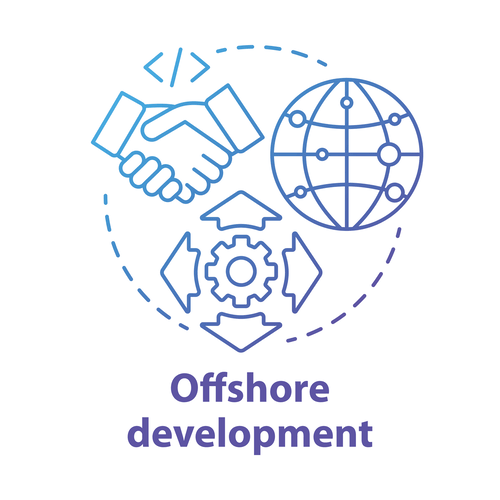Mongodb vs PostgresSQL: Compare Database Structure
This code is executed for a different set of ListOfTimestamps andship_id. For queries Q8i and Q8ii the pseudocode is almost the same one that responds to Q7i and Q7ii and for this reason we preferred to exclude it. It’s designed to be agile and scalable, and it uses dynamic schemas so that you can create records without defining the structure first.

Furthermore, you can also update related data in a single atomic write operation while applications issue fewer queries to complete common operations. Documents in MongoDB for the embedded data model must be smaller than the maximum BSON document size (16 MB). On the other hand, MongoDB allows you to store data in any structure that can be quickly accessed by indexing, no matter how deeply nested in arrays or subdocuments. For MongoDB, this is achieved by using a “replica set” — a synchronized cluster consisting of three or more servers that keep replicating data between them.
If you’re reading this, you probably understand how the promise and async/await are different in the execution context.
MongoDB and Postgres are the most popular database management systems. Even though both of them support the same work, they serve different concerns. MongoDB is for the one who needs supporting agile and DevOps methodologies, which is time to market and developer productivity. In contrast to this, Postgres is for the one who handles thousands of queries on hundreds of data tables. For the developer who needs compatibility and has excellent SQL (Structured Query Language) skills, then Postgres is the best choice. On top of this, MongoDB offers support for various programming languages.
The results show that the response time is reduced in case of PostgreSQL for both queries and presents bigger fluctuations as the number of timestamps set increases. The response time in case of 10 timestamps is almost the same in both systems while in case of 1000 timestamps the response time is reduced at less than half. Furthermore, one important observation is the average response time in case of PostgreSQL remains almost the same in each same sample relating to time intervals.
MongoDB where query Complete tutorial in 2022
PostgreSQL is in the top 5 DBEngine databases used more often than most commercial systems. With millions of embedded deployments, major cloud service providers, and significant on-premises installations, PostgreSQL is the most popular application development choice. Over the 25 years of working on PostgreSQL, several features have been developed for developers and administrators, delivered on a reliable software server operating worldwide.

By storing data in fields such as nested subdocuments and arrays, related information in JSON documents can be stored together for quick query access through the MongoDB query language. The important thing to note here is that transactions allow various changes to a database to either be made or rolled back in a group. Therefore, in a relational database, the data would be modeled across independent parent-child tables in a tabular schema. Availability ensures that even during a server outage, there’s no data downtime. MongoDB uses primary node replication, which duplicates data into replica sets.
MongoDB find in command Complete tutorial in 2022
I then shift the focus to PostgreSQL, which is an open-source database that has a vast ecosystem with many companies that develop solutions for PostgreSQL. The video shows various options available for installing PostgreSQL on Kubernetes, such as Crunchy Data, PGO, Stuck Grass, Zando PostgreSQL operator, and Neon. I also discuss the benefits of using PostgreSQL, such as its extensive ecosystem, advanced features, and superior performance.
PostgreSQL supports a range of data types, including dates, text, integers, and Booleans. MongoDB supports a rapid, iterative cycle of development so well because of the way that a document database turns data into code under the control postgresql document database of developers. One of the most powerful features of relational databases that make writing applications easier is ACID transactions. The details of how ACID transactions are defined and implemented fill many computer science text books.
Native JSON Data Stores do not always have the Best Performance
These software developers and managers have experience in building and deploying market-competitive software solutions for a number of businesses. The distributed architecture of MongoDB means that different components spread across multiple platforms work together in collaboration. If there is a need to scale, it can be easily done through horizontal scaling of more platforms. MongoDB query language is used to access and store data in MongoDB. Let’s go through a detailed comparison of MongoDB vs PostgreSQL, including their key features, differences, and similarities. Developers can use MongoDB or PostgreSQL to develop and build any design project.
- However, it’s disorganized and not as elegant as the simple join function that PostgreSQL incorporates.
- You can store all types of data as JSON documents for fast retrieval, replication, and analysis.
- Sharding distributes the workload for high-traffic data sets across multiple servers.
- Finally, we conducted experiments that consider a combination of different sets of vessels and timestamps.
- As organizations navigate the ever-expanding landscape of databases, choosing the right one becomes a critical decision that can shape the efficiency, scalability, and success of their applications.
- On one hand terrestrial VHF stations have limited range (up to 35 nm) with great ingestion/reception rates and on the other hand satellites have huge footprints but suffer greatly from packet collision problems.
A singular primary node receives the writes, and secondary nodes then replicate this data. MongoDB automatically triggers a failover that elects a new primary node if a primary node becomes unavailable. PostgreSQL, like Linux, is an example of a well-managed open source project. One of the most broadly adopted relational databases, PostgreSQL came out of the POSTGRES project at the University of California at Berkeley starting in 1986 and it has evolved with the times. PostgreSQL has a full range of security features including many types of encryption.
Features that make PostgreSQL in demand:
There is lots of community and aid to help you interact with MongoDB using one of your preferred programming languages. The database complies with a wide range of security standards and has numerous features to support reliability, backup, and disaster recovery, usually through third party tooling. Furthermore, MongoDB Live Migration Service makes it easier to migrate from self-managed MongoDB databases to the fully-managed cloud database platform, MongoDB Atlas. This flexibility is hugely useful when consolidating information from diverse sources or accommodating variations in documents over time, especially as new application functionality is continuously deployed. PostgreSQL database has a monolithic architecture which means all its components are unified.
MongoDB uses primary node replication and secondary nodes to offer availability. MongoDB is a NoSQL database that does not use predefined relationships between collections. MongoDB uses denormalization, which embeds related data within documents.
The Big Decision: When To Use MongoDB Or PostgreSQL?
Scaling is inherently built into MongoDB, but with PostgreSQL an extension is required to add that capability. There are numerous extensions to choose from to achieve scalability with PostgreSQL. You can have as many nodes as needed in a sharded cluster with MongoDB, and PostgreSQL has no limit on database size. PostgreSQL has a numerous selection of data types which include Boolean, Character, Numeric, Temporal, UUID, Array, JSON, key-value pairs, and special types such as network address and geospatial data. The reason for this behavior is that the data stored in MongoDB are in GeoJson format and each record consist of many extra characters and a unique auto created id called ObjectId. Thus, each record is significant bigger in size than it was in its original CSV format.
